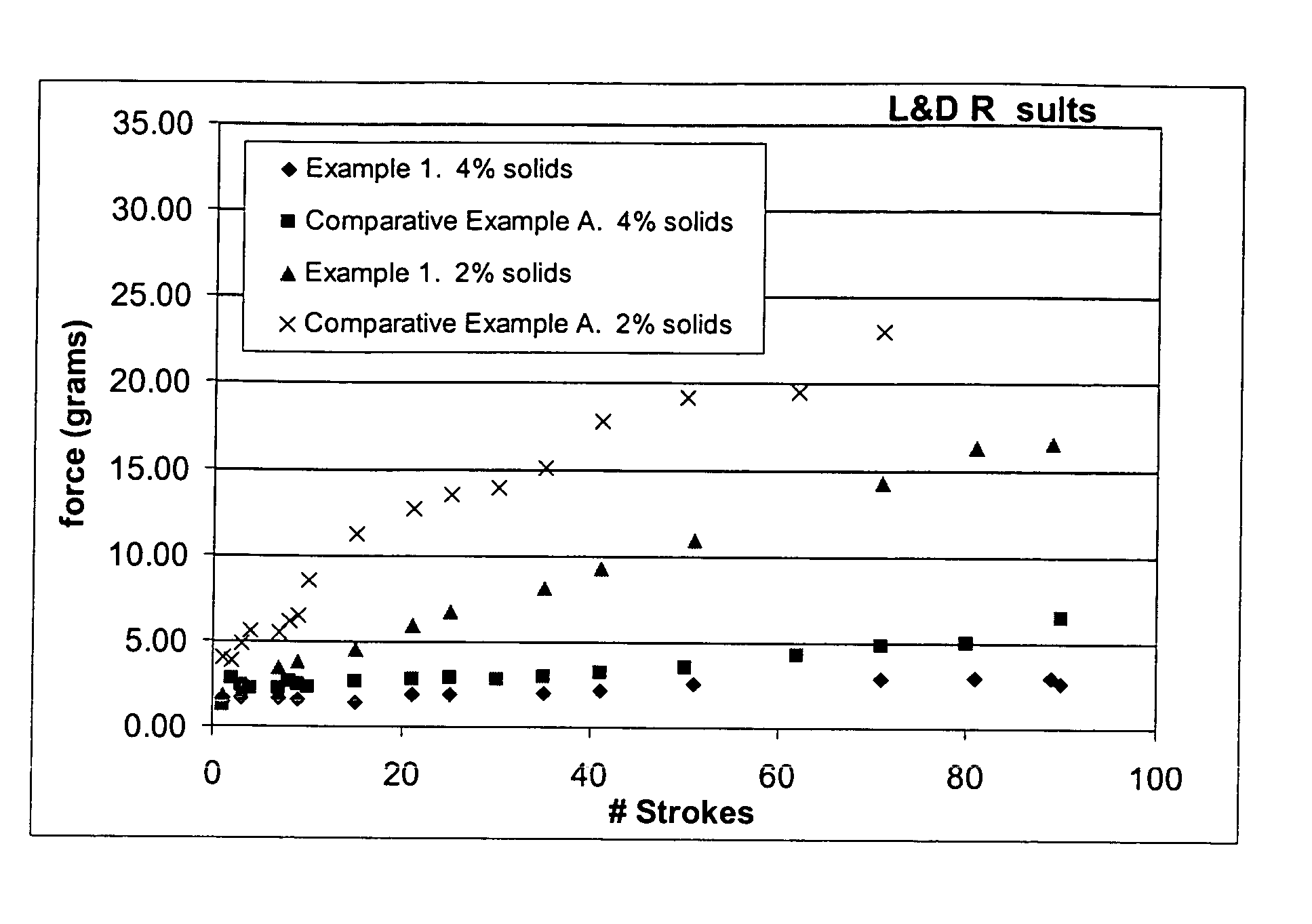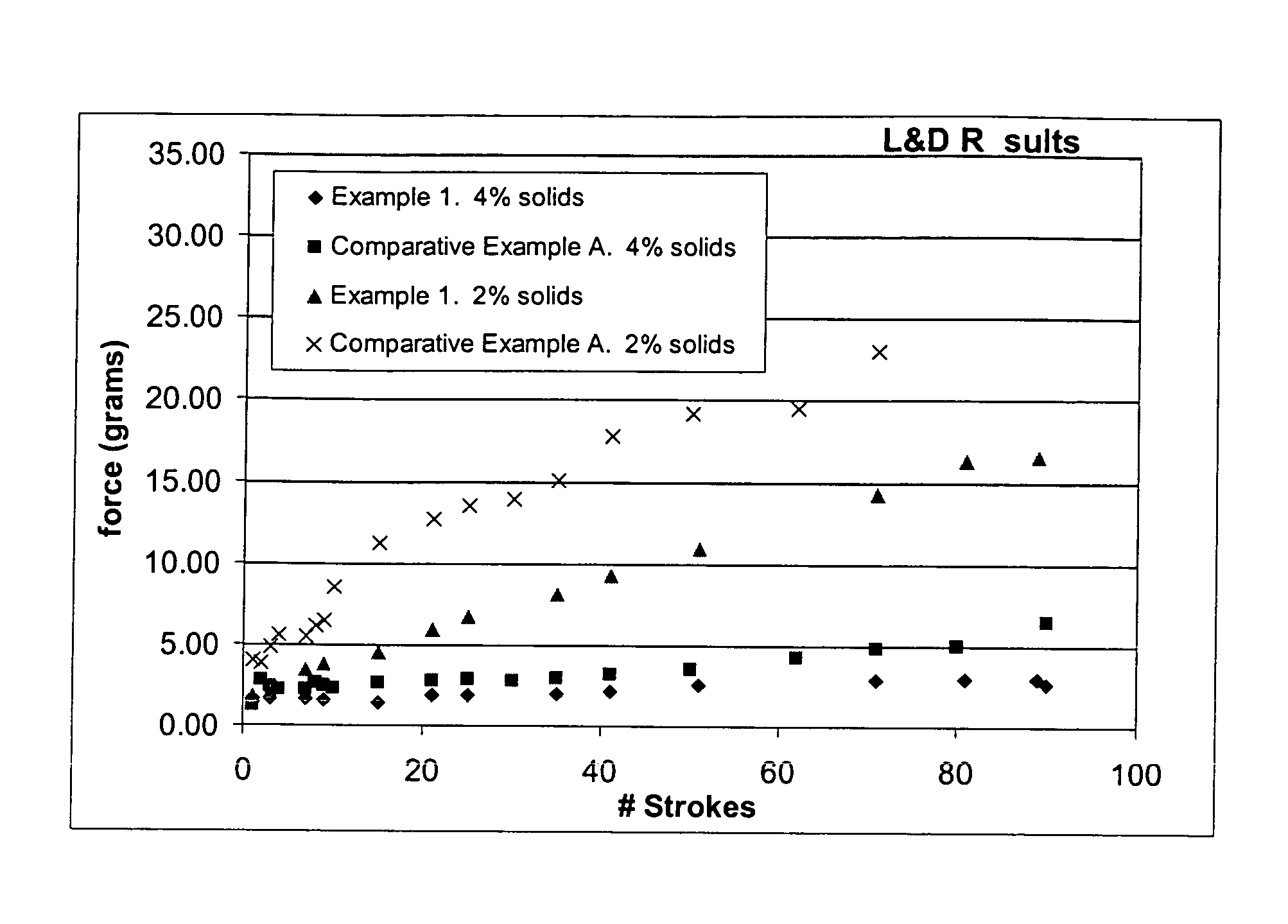Lubricious coatings for medical device
a technology of lubricating coatings and medical devices, applied in the direction of catheters, packaging foodstuffs, impression caps, etc., can solve the problems of lack of abrasion resistance, rapid loss of initial lubricity, and beading and running off of hydrophobic coatings, so as to improve the adhesion of the coating to the substrate
- Summary
- Abstract
- Description
- Claims
- Application Information
AI Technical Summary
Benefits of technology
Problems solved by technology
Method used
Image
Examples
example 1
A hydrophilic coating was prepared using LS 400 styrylpyridinium modified polyvinyl alcohol (4.1% styrylpyridinium functional groups) available from Charkit Chemical Corp.
The coating formula used was the following: 10 parts polyethylene oxide (900,000 MW) 1 part polyvinyl alcohol modified styrylpyridinium diluted with water to 2% solids and to 4% solids
Outer shafts formed from PEBAX® 7033, polyether-block-amide, and having a 0.042″ diameter were first plasma treated with helium (He), sponge coated with the formula shown above, air dried at room temperature, and UV cured at 360 nm for 30 seconds on each side using a Hg vapor lamp. The coated shafts were then tested for lubricity and durability using the Lubricity and Durability Tester.
PUM
| Property | Measurement | Unit |
|---|---|---|
| hydrophobic | aaaaa | aaaaa |
| hydrophilic | aaaaa | aaaaa |
| general structure | aaaaa | aaaaa |
Abstract
Description
Claims
Application Information
 Login to View More
Login to View More - R&D
- Intellectual Property
- Life Sciences
- Materials
- Tech Scout
- Unparalleled Data Quality
- Higher Quality Content
- 60% Fewer Hallucinations
Browse by: Latest US Patents, China's latest patents, Technical Efficacy Thesaurus, Application Domain, Technology Topic, Popular Technical Reports.
© 2025 PatSnap. All rights reserved.Legal|Privacy policy|Modern Slavery Act Transparency Statement|Sitemap|About US| Contact US: help@patsnap.com



